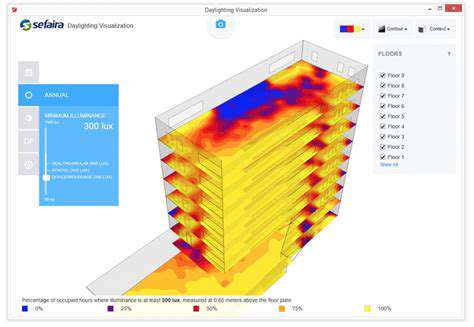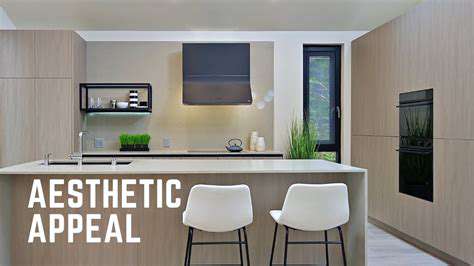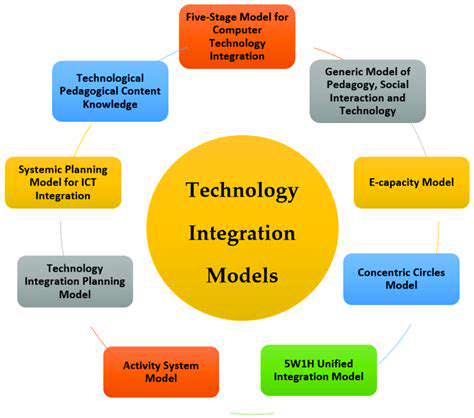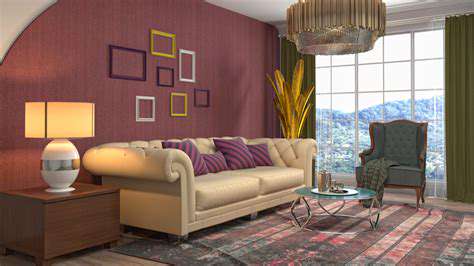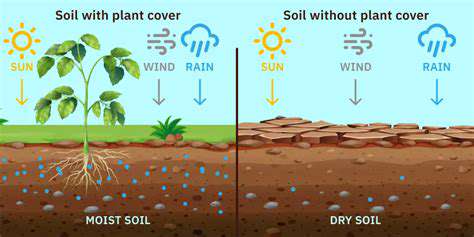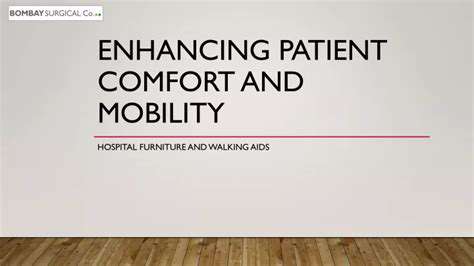How to Achieve a Minimalist Study Design for Enhanced Productivity and Relaxation
Decluttering for Enhanced Focus
Decluttering is the cornerstone of minimalist design. It's not just about tidying up; it's about consciously removing items that don't serve a purpose in your study process. This includes anything from physical objects to digital distractions. Start by identifying items you haven't used in the past three months. If it hasn't been a part of your routine in that time, chances are it's not essential. Discard, donate, or store them out of sight to create a more open and uncluttered space.
Strategic Organization for Efficiency
Once you've decluttered, strategic organization is vital. This isn't about creating elaborate systems; it's about finding simple, effective methods for storing what you need. Utilize storage solutions that maximize space and keep items readily accessible. Label containers and shelves to quickly locate materials and maintain order. A well-organized study space enhances efficiency, making it easier to find what you need and minimizing wasted time searching.
Consider using vertical space, such as shelves or wall-mounted organizers. This can save valuable desk space and create a more visually appealing and organized study environment.
Choosing the Right Furniture and Accessories
Select furniture and accessories that are both functional and aesthetically pleasing. Invest in quality items that will last, rather than trendy pieces that might become outdated quickly. Prioritize pieces that support your study habits and don't impede your workflow. A comfortable chair and a well-lit desk are essential components of a supportive minimalist study space.
Consider the materials and colors of your furniture. Natural materials and neutral colors often promote a sense of calm and focus, further enhancing the minimalist aesthetic.
Incorporating Natural Elements for Wellbeing
Integrating natural elements, such as plants, can create a calming and restorative study environment. Plants not only add a touch of beauty but can also improve air quality and reduce stress. A small succulent or a low-maintenance houseplant can add a pop of life to your space while promoting focus and wellbeing.
Maintaining a Minimalist Study Space
Minimalism is not a one-time project; it's a continuous process of refinement. Develop a routine for maintaining your minimalist study space. Regularly declutter, organize, and evaluate your belongings to ensure your space remains focused and productive. This proactive approach will maintain a comfortable and effective learning environment.
Consistency is key. By making small, intentional changes to your study routine and environment, you'll create a space that supports your learning and allows you to focus on your studies effectively.

Curating Your Study Materials
Choosing Relevant Resources
When curating your study materials, prioritize selecting only the resources directly relevant to your learning objectives. Avoid getting bogged down in extraneous information or materials that simply don't align with what you need to master. This focused approach minimizes the time spent on irrelevant material, allowing you to concentrate on the core concepts and skills you're aiming to acquire. By streamlining your resources, you'll create a more manageable and effective learning experience, ultimately leading to better comprehension and retention of the essential information.
Thorough examination of course syllabi, reading lists, and lecture notes is crucial. Identify the key concepts and topics that will be assessed, and then meticulously select the materials that directly support these areas. This targeted approach ensures that your study materials are directly aligned with the course requirements and your learning goals. This focused approach will significantly reduce the mental clutter associated with unnecessary information and help you concentrate on what truly matters.
Organizing Your Materials
A well-organized study space is essential for a minimalist study design. A clean and clutter-free environment allows your mind to focus on the material at hand without distractions. This minimizes mental fatigue and maximizes concentration. This organization extends beyond your physical study space; it also includes the way you structure and arrange your study materials.
Employing a system to categorize and arrange your notes, readings, and other resources will save you significant time when you need to access specific information. Color-coding, tab dividers, or digital file organization are all effective strategies for creating a readily accessible and intuitive system. This approach will save you valuable time and effort in the long run, allowing you to dedicate more time to understanding the material instead of searching for it.
Prioritizing Active Recall
Minimalist study design isn't just about reducing the volume of materials; it's also about optimizing the way you interact with them. A key strategy is prioritizing active recall techniques. Instead of passively rereading your notes, actively test yourself by recalling information from memory. This active engagement with the material strengthens your understanding and retention. This is a far more effective method of learning compared to simply rereading material.
Flashcards, practice questions, and teaching the material to someone else are all excellent active recall methods. By actively engaging with the material in these ways, you're forcing your brain to retrieve and process information, which strengthens memory and comprehension. This focused, active approach ensures that you're not just passively absorbing information but truly understanding and internalizing it.
Utilizing Digital Tools for Efficiency
In today's digital age, leveraging digital tools can significantly enhance your minimalist study design. Digital note-taking apps, online flashcards, and study-specific software can help you organize and manage your materials effectively. These tools offer streamlined access to information, allowing you to focus on the core study content without being bogged down by physical organization or searching. Digital tools reduce the clutter and distractions associated with physical materials, allowing you to focus on learning.
Digital tools often offer features like highlighting, note-taking, and annotations, which can be invaluable for quickly referencing important passages or concepts. These features are crucial in streamlining your study process, enabling you to efficiently access and review key information when needed. Utilizing the right digital tools can contribute significantly to an efficient and effective study process, which is a key element of a minimalist study design.
Optimizing Your Study Schedule and Habits
Creating a Realistic Study Schedule
A well-structured study schedule is crucial for effective learning. It's not just about cramming information; it's about strategically allocating time for different subjects, incorporating breaks, and considering your personal learning style. A realistic schedule accounts for your existing commitments, like work, social activities, and personal time, ensuring that you don't overcommit and burn out. This proactive planning allows for flexibility and adjustments as needed, acknowledging that life inevitably throws curveballs. A good schedule isn't static; it's a dynamic tool that evolves with your progress and changing needs.
Consider using a planner, calendar, or digital scheduling tool to visualize your study sessions. This visual representation helps you see the bigger picture and identify potential conflicts or gaps in your schedule. Break down large assignments into smaller, more manageable tasks. This approach transforms overwhelming projects into a series of smaller, achievable steps, making the overall process less daunting and more sustainable over the long haul. Planning out your study schedule in advance is a key component of a minimalist study design, allowing you to focus on the material and minimize distractions.
Prioritizing Tasks and Maximizing Focus
Effective study habits go beyond simply scheduling time. Prioritizing tasks based on importance and urgency is essential for maximizing focus and productivity. Identify which tasks require the most concentration and allocate dedicated blocks of time for these activities. Learning to prioritize effectively minimizes stress and ensures that you dedicate your mental energy to the most impactful tasks. This prioritization is a key strategy in a minimalist approach, allowing you to focus your efforts on what truly matters.
Minimizing Distractions and Enhancing Concentration
A minimalist study environment promotes focus and concentration. Identify and eliminate potential distractions in your study area. This could involve turning off notifications on your phone and computer, finding a quiet space, or even using noise-canceling headphones. Creating a dedicated study space, free from clutter and visual distractions, can significantly enhance your ability to concentrate. A clean and organized workspace not only promotes focus but also contributes to a sense of calm and control, crucial elements of a minimalist study design.
Consistent study habits, including regular breaks and a healthy lifestyle, are also vital components. Sufficient sleep, balanced nutrition, and regular exercise contribute significantly to improved focus and memory retention. By actively managing distractions and maintaining a healthy routine, you can enhance your ability to concentrate and achieve your academic goals effectively.


